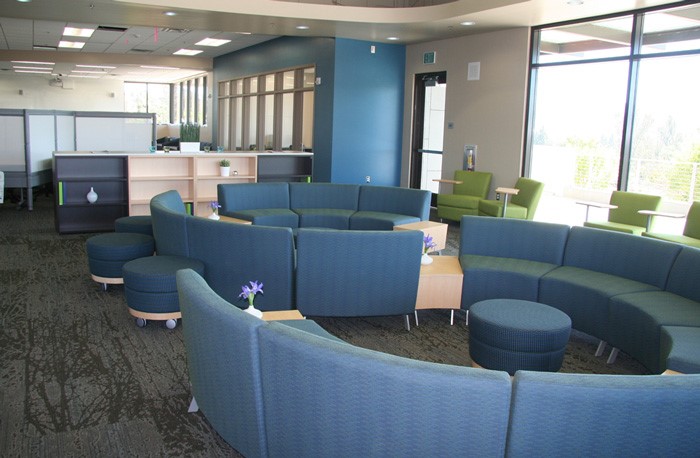Hybrid Office Space – Is It Time To Rethink Office Space Design
Hybrid Office Space – Is It Time To Rethink Office Space Design
Did Google get it right?
In a lot of ways, yes — by revolutionizing search, email and how many of us think about the Internet. But in the way of making open office space famous, Google may not have the answers — not this time, at least.
While it’s certainly aesthetically pleasing, concentration and productivity often suffer in an open office setting. And with most of today’s mobile workers spending less than 60% of their time in their offices, office design must now support the different work styles of their entire workforce.
For progressive companies seeking to create the most effective layout for their employees, measuring the benefits of both the traditional and open office layout is therefore critical to finding what truly works for your company.
The pros and cons of traditional office space
There are countless reasons why the cubicles and corridors can be beneficial to both your employees and your company’s productivity. And a few reasons why it might not work, too.
First, the Pros.
Privacy: The walls and doors so prevalent in a traditional office provide the ultimate privacy when needed. Whether your employees need more focus, or a quiet space for top secret projects, the privacy of a traditional office might be just what you need.
Quiet: Do your employees need to concentrate? A place to think? Are they easily distracted by their coworkers’ conversations?
In the traditional office space, quiet is way easier to come-by than in an open office. Even when a project calls for collaboration, any meeting of the minds can be more intentional and more focused when held in the contained, quiet spaces that a traditional office provides.
Clarity: In a traditional office, there is no question about who is leading a team or even where to sit. If your company is seeking this sort of clarity, a traditional approach to office design might be what you need.
Now, the Cons.
Stifling: The layout of a traditional office might not be a good match for a modern company that encourages teamwork and creative collaboration. With everyone sealed away behind walls and doorways, big ideas might not have the growth potential that a collaborative, open office space provides.
Old-fashioned: Visually, the traditional office can feel old-fashioned or outdated even. In a traditional office, it’s hard to get away from hierarchical thinking which may not have a place in a modern company.
Open office? Pass or Fail?
The layout of the open office is the quintessential look for many of today’s modern companies. From real estate to tech, from restaurants to think-tanks, the open office represents hipness. And while nothing says modern quite like the open floor plan, this design also has its ups and downs.
Pass
Organic collaboration: Without walls, cubicles or doorways to hinder sharing, collaboration is king in the open office. Brainstorming happens more organically when ideas are shared across a room. Someone not even involved in the project might offer just the bit of information necessary to really move a project along.
Aesthetically pleasing: When you walk into an open office space it looks good. Plain and simple. With clean lines and an unobstructed view, the open office offers a modern look that is pleasing to the eye.
Fail
Lack of privacy: If you are working on a private project or if you like to work in a space without all eyes and ears upon you, the open office is non-existent. Teams and individuals must use effort and energy to find private space – time and energy that could be used towards progress and productivity.
Distractions: Focused attention to a project can be difficult when a worker is distracted by every voice and idea in the room. Putting one’s head down is not always an easy task when there are exciting conversations going on throughout the room, even if that conversation is about nothing more than where a certain group is headed for lunch.
But what about companies looking for a little bit of both? They want solid structure for creativity, collaboration and quiet productivity.
The best of both worlds: the hybrid office space
When designed properly, the hybrid office space combines all the benefits of both the traditional and the open office space, without any of the drawbacks.
Privacy and collaboration: The hybrid office offers privacy when needed and collaboration when required. With its open feel, the well-planned, hybrid office offers privacy and creative collaboration, all within the same space.
Visually pleasing: Visually, the hybrid office still has the cool, sleek look many progressive companies desire. It offers an open feel without the stagnation and isolation the traditional office space can sometimes create.
Flexible space: Using good design elements, both in the individual furnishings and in a well-planned layout, the hybrid office offers flexibility. Whether one is working on a solo project or with a team, this flexibility means employees don’t fritter away energy that could otherwise be put towards productivity.
Whatever you’re looking for, the right office design can help your company foster creativity and maximize productivity.


